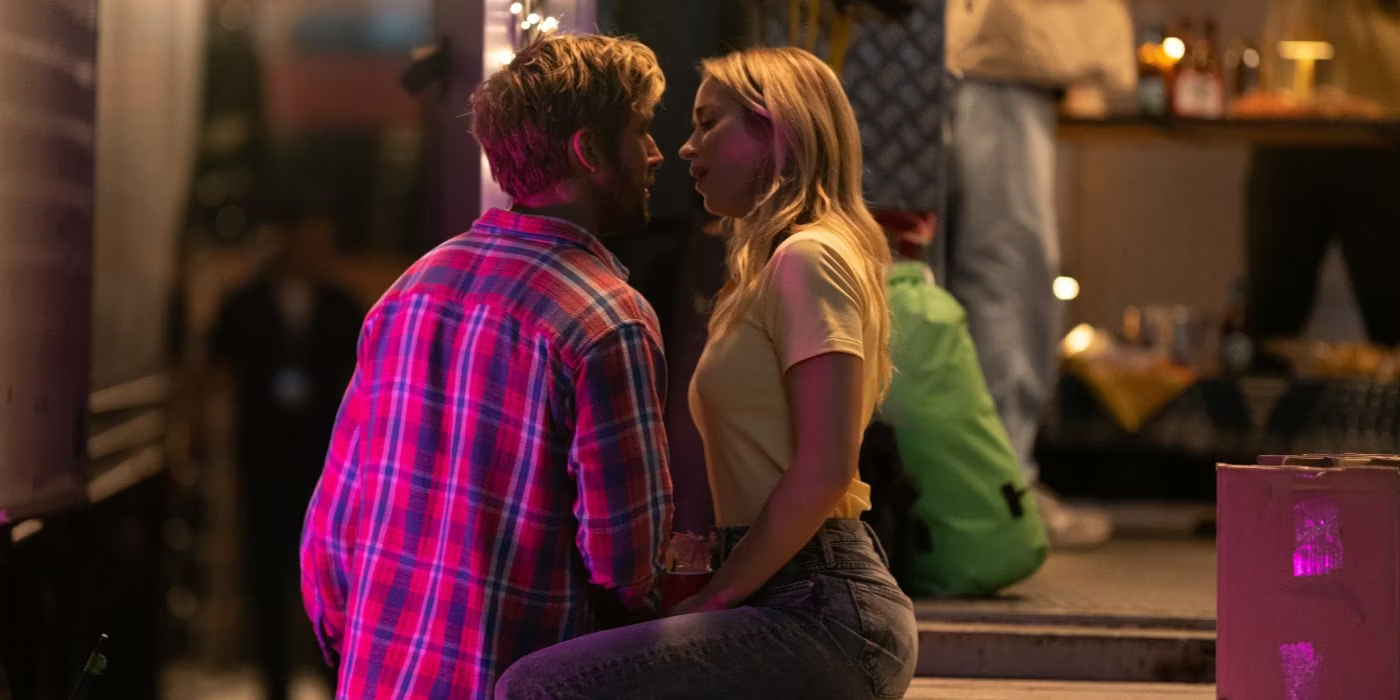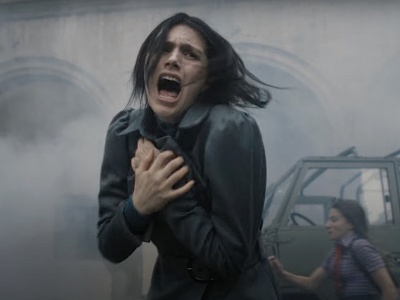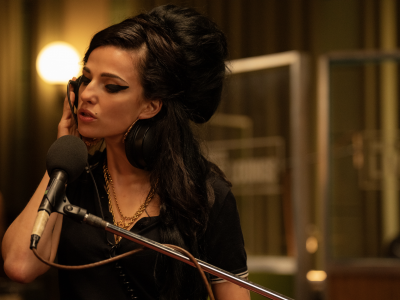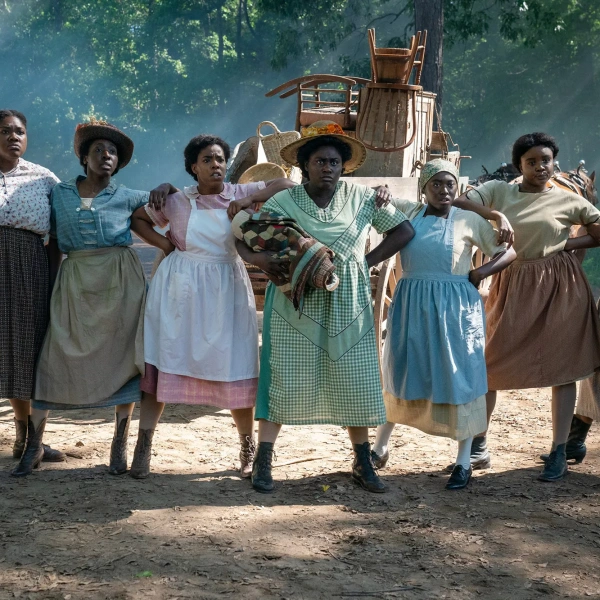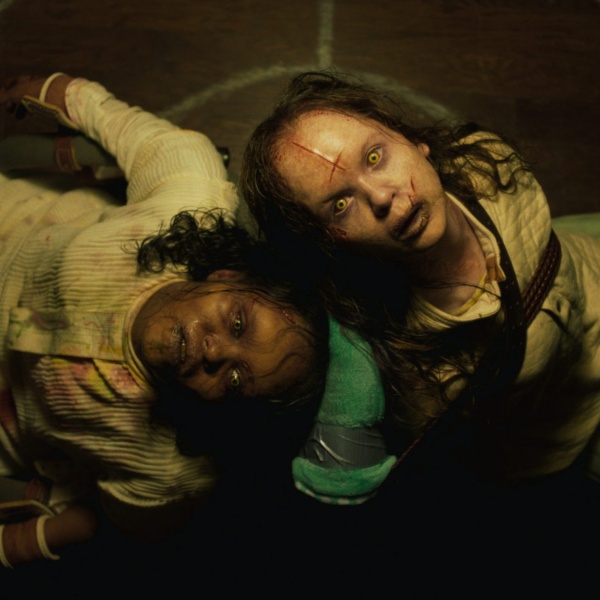‘Loving Vincent’ – film article for Novastream
A sumptuous feast of colour, movement and texture, ‘Loving Vincent’ is a breathtaking visual masterpiece, celebrating the life and death of one of the world’s most renowned painters, Vincent van Gogh. Directed by artist Dorota Kobiela and Hugh Welchman, and starring Poldark’s Aidan Turner and Eleanor Tomlinson, Jerome Flynn from Game of Thrones, Saoirse Ronan and heart throb Douglas Booth, we were certainly in for a treat.
Loving Vincent is an ethereal biopic layered with drama and intrigue. Set one year after Vincent van Gogh’s death, we follow our hero Armand Roulin, a somewhat cynical young man in a bright yellow suit and the son of Postman Roulin, a close friend of the deceased artist. After much persuasion from his father, Armand begrudgingly agrees to deliver a letter written by van Gogh, to his younger brother Theo. However, upon arriving in Paris, which at the time was at its artistic prime, Armand learns from Père Tanguy, van Gogh’s former mentor and oil paint supplier that Theo died shortly after his brother. Suddenly invested in van Gogh, Armand travels to the town of Auvers-sur-Oise and begins to piece together the details linking to his death. As Armand absorbs the perspectives of the unique characters inhabiting the sleepy town, our hero begins appreciate the world around him and the troubled artist who saw beauty everywhere.
As excited as I was about the international trailer and its two minute worth of visuals, I still had doubts. I had only recently found about feature film after watching the international trailer on the Madman Facebook page, so my expectations were high. An avid painter myself and an enthusiast for van Gogh, I was worried about the potential of this ‘fully painted feature length film’, especially from an artistic stand point. I was skeptical that a team of 80 top level painters would be able to successfully pull off a painted animation at such a large scale, as no other team of animators has done so. Most importantly, this is Vincent van Gogh, one of the leading post-impressionist artists from the 19th century. How could a 94 minute length film tell the life and death of an artist who revolutionised the concept of colour and used brush strokes as a method to convey emotion?
I’m happy to say any trepidation and skepticism I experienced before hand had vanished after watching Loving Vincent. I think it’s important to note I will be reviewing Loving Vincent as a creative piece, not just a bog standard movie you’d see at the cinemas. So, my review will contain some biased opinions. Think of this review as an amateur artist studying the thoughts and process behind an oil painting. Also, this article will contain spoilers.
My personal thoughts on the film in general
I can safely say, Loving Vincent is an artwork in itself. Right from the get go, I was immediately drawn into the opening credits. For about a minute or so, it was a sequence of sweeping brush strokes of varying thickness, layered textures and vibrant colours. I assume this was to prove to the audience that yes, every frame of the film was painstakingly hand painted.
I was also pleasantly surprised the film nattily incorporated oil paintings from the last three years of van Gogh’s life. According to the director, at least 120 landscape and portraiture paintings were reimagined and used in the film. Famous pieces include Café Terrace at Night (1888), which introduces Loving Vincent’s primary hero Armand, The Starry Night (1889), The Red Vineyard (1888) and several iconic portraits, that make up the entire character ensemble. Throughout Armand’s journey, we come across several people who were painted by van Gogh and played a part in his life. As a result, both producer and director cast actors who physically resembled the person painted, and who were able to bring that character to life. Heart throb Douglas Booth plays young Armand Roulin, Jerome Flynn as Dr. Gachet, Vincent’s personal doctor, Saoirse Ronan as Marguerite Gachet, Aidan Turner as the Boatman, Chris O’Dowd as Postman Roulin, John Sessions as Père Tanguy and Eleanor Tomlinson as Adeline Ravoux.
What I found most interesting is that Armand always meets one of these historical people exactly how they were painted, and only has solo interactions with them. In my perspective, the way Armand interacts with the other characters on screen is similar to when a person is viewing an artwork. The relationship between artwork and viewer is often a personal and intimate one.
According to Vincent van Gogh, it was his ambition to paint and recreate modern portraits that would successfully convey the soul of the sitter, in hopes that the viewer would still be able to look upon the portrait and understand the person, even after several years have past. I believe this painting process translates into the film. Even though these people may have had little significance historically, each encounter is memorable for Armand. Unlike the majority of mainstream movies that characterise people through speech and their actions, Armand unravels a character by subtly observing their perceptions on Vincent van Gogh’s death and how it affected them. Doing so, not only do we piece together a more tangible image of the artist, the sharing of fragmented memories gives us more of personal connection with the people on screen.
My thoughts on the film’s unique structure
I did find the overall structure of Loving Vincent, exasperating at times. Aside from using recollections of different characters as a plot device, film transitions between the past and present were also used. Often, the film would display ’noir’ stylised flashbacks that featured the artist when he was alive. Anything that wasn’t painted in black and white, paid tribute to the last three years of van Gogh’s career. However, in those last few years, the artist had experimented with a variety of painting styles and techniques and created at least 860 oil paintings, which the production team had painstakingly replicated into the film. Thus the film was an eclectic combination of black and white moving frames along with sweeping polychromatic images. Not only did I (as a viewer) had to review the action between the past and present, I also had to process the ‘still’ changes that were painted in a completely different style than the frames before hand. This could be in terms of colour, lighting or the thickness of brush stroke. What may have seemed like an expansive array of colour and textures, it could be considered a jarring headache for some. I felt this prevented me from connecting with some of the more important characters present. Sometimes I would be too focused on the movement of the brush strokes rather than the character itself, and miss important information related to the plot.
That being said, I did believe that ‘noir’ segments and the movement between past and present was crucial for the overall storytelling of the film. Despite being one of the most famous artist’s in the world, there are parts of Vincent van Gogh’s life that were never documented through letters or paintings. I personally liked how realistically the black and white ‘stills’ were painted as it allowed viewers to distinguish how the artist perceived the world compared to other people. Moreover, it allowed the directors to show dramatic situations and creative liberty without having to paint scenarios that never existed. Thus, the production team could remain as true as possible to the execution and spirit of Vincent van Gogh’s work.
Final Thoughts
What struck me also is that Loving Vincent wasn’t a full animated biography of the life and death of Vincent van Gogh. Instead, the film focuses on the lives of the people he had influenced before he died. Furthermore, the film suggests that he was possibly murdered by a close friend rather than committing suicide. Together with Armand, we piece together every fragmented memory of the artist as well as the flash back sequences. Together, they combine into a more plausible theory on how van Gogh died. I personally enjoyed the speculation of murder around his death. However, this creative theory sparked outrage among the fiercely loyal van Gogh supporters, claiming that no, Vincent van Gogh did commit suicide and the film itself was a lacklustre attempt to recreate the life of one of the most famous post-impressionist painters.
I think differently. Looking back, I believe Loving Vincent tries to encourage fans of the artist to look beyond the fact that he died, and focus on what he had achieved as a renowned painter. As Saoirse Ronan’s character states, ‘We want to know about his death. But what do we know of his life?’. The answer, almost next to nothing. In this case, we are literally Armand Roulin. We do our best to understand van Gogh through the knowledge of secondary sources, but we become more obsessed with his death as a result. As much as we love to theorise, we will never truly know how van Gogh died. Instead, the film urges viewers to remember the man who, in his time, had revolutionised the impasto technique and the concept of colour theory. In my opinion, Loving Vincent celebrates and pays homage to one of the greatest painters that had ever lived.
Article by Jasmine Cottan.




